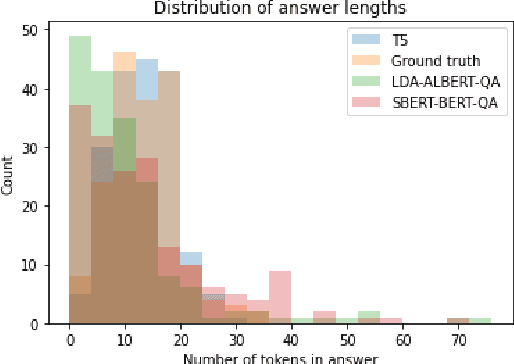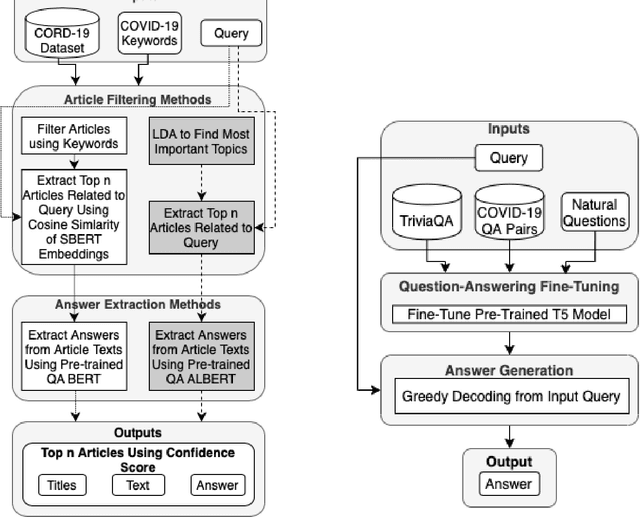Mahboobeh Parsapoor
Mah Parsa
Synthetic Data Generation Techniques for Developing AI-based Speech Assessments for Parkinson's Disease (A Comparative Study)
Dec 04, 2023Abstract:Changes in speech and language are among the first signs of Parkinson's disease (PD). Thus, clinicians have tried to identify individuals with PD from their voices for years. Doctors can leverage AI-based speech assessments to spot PD thanks to advancements in artificial intelligence (AI). Such AI systems can be developed using machine learning classifiers that have been trained using individuals' voices. Although several studies have shown reasonable results in developing such AI systems, these systems would need more data samples to achieve promising performance. This paper explores using deep learning-based data generation techniques on the accuracy of machine learning classifiers that are the core of such systems.
AI-powered Language Assessment Tools for Dementia
Sep 13, 2022



Abstract:The main objective of this paper is to propose an approach for developing an Artificial Intelligence (AI)-powered Language Assessment (LA) tool. Such tools can be used to assess language impairments associated with dementia in older adults. The Machine Learning (ML) classifiers are the main parts of our proposed approach, therefore to develop an accurate tool with high sensitivity and specificity, we consider different binary classifiers and evaluate their performances. We also assess the reliability and validity of our approach by comparing the impact of different types of language tasks, features, and recording media on the performance of ML classifiers.
Meta-learning on Spectral Images of Electroencephalogram of Schizophenics
Feb 16, 2021



Abstract:Schizophrenia is a complex psychiatric disorder involving changes in thought patterns, perception, mood, and behavior. The diagnosis of schizophrenia is challenging and requires that patients show two or more positive symptoms for at least one month. Delays in identifying this debilitating disorder can impede a patient ability to receive much needed treatment. Advances in neuroimaging and machine learning algorithms can facilitate the diagnosis of schizophrenia and help clinicians to provide an accurate diagnosis of the disease. This paper presents a methodology for analyzing spectral images of Electroencephalography collected from patients with schizophrenia using convolutional neural networks. It also explains how we have developed accurate classifiers employing Model-Agnostic Meta-Learning and prototypical networks. Such classifiers have the capacity to distinguish people with schizophrenia from healthy controls based on their brain activity.
Transformer-Based Models for Question Answering on COVID19
Jan 16, 2021


Abstract:In response to the Kaggle's COVID-19 Open Research Dataset (CORD-19) challenge, we have proposed three transformer-based question-answering systems using BERT, ALBERT, and T5 models. Since the CORD-19 dataset is unlabeled, we have evaluated the question-answering models' performance on two labeled questions answers datasets \textemdash CovidQA and CovidGQA. The BERT-based QA system achieved the highest F1 score (26.32), while the ALBERT-based QA system achieved the highest Exact Match (13.04). However, numerous challenges are associated with developing high-performance question-answering systems for the ongoing COVID-19 pandemic and future pandemics. At the end of this paper, we discuss these challenges and suggest potential solutions to address them.
Non-Pharmaceutical Intervention Discovery with Topic Modeling
Sep 10, 2020


Abstract:We consider the task of discovering categories of non-pharmaceutical interventions during the evolving COVID-19 pandemic. We explore topic modeling on two corpora with national and international scope. These models discover existing categories when compared with human intervention labels while reduced human effort needed.
Brain Emotional Learning-based Prediction Model For the Prediction of Geomagnetic Storms
Aug 01, 2020



Abstract:This study suggests a new data-driven model for the prediction of geomagnetic storm. The model which is an instance of Brain Emotional Learning Inspired Models (BELIMs), is known as the Brain Emotional Learning-based Prediction Model (BELPM). BELPM consists of four main subsystems; the connection between these subsystems has been mimicked by the corresponding regions of the emotional system. The functions of these subsystems are explained using adaptive networks. The learning algorithm of BELPM is defined using the steepest descent (SD) and the least square estimator (LSE). BELPM is employed to predict geomagnetic storms using two geomagnetic indices, Auroral Electrojet (AE) Index and Disturbance Time (Dst) Index. To evaluate the performance of BELPM, the obtained results have been compared with ANFIS, WKNN and other instances of BELIMs. The results verify that BELPM has the capability to achieve a reasonable accuracy for both the short-term and the long-term geomagnetic storms prediction.
Brain Emotional Learning-Based Prediction Model
May 05, 2016



Abstract:This study suggests a new prediction model for chaotic time series inspired by the brain emotional learning of mammals. We describe the structure and function of this model, which is referred to as BELPM (Brain Emotional Learning-Based Prediction Model). Structurally, the model mimics the connection between the regions of the limbic system, and functionally it uses weighted k nearest neighbors to imitate the roles of those regions. The learning algorithm of BELPM is defined using steepest descent (SD) and the least square estimator (LSE). Two benchmark chaotic time series, Lorenz and Henon, have been used to evaluate the performance of BELPM. The obtained results have been compared with those of other prediction methods. The results show that BELPM has the capability to achieve a reasonable accuracy for long-term prediction of chaotic time series, using a limited amount of training data and a reasonably low computational time.
 Add to Chrome
Add to Chrome Add to Firefox
Add to Firefox Add to Edge
Add to Edge